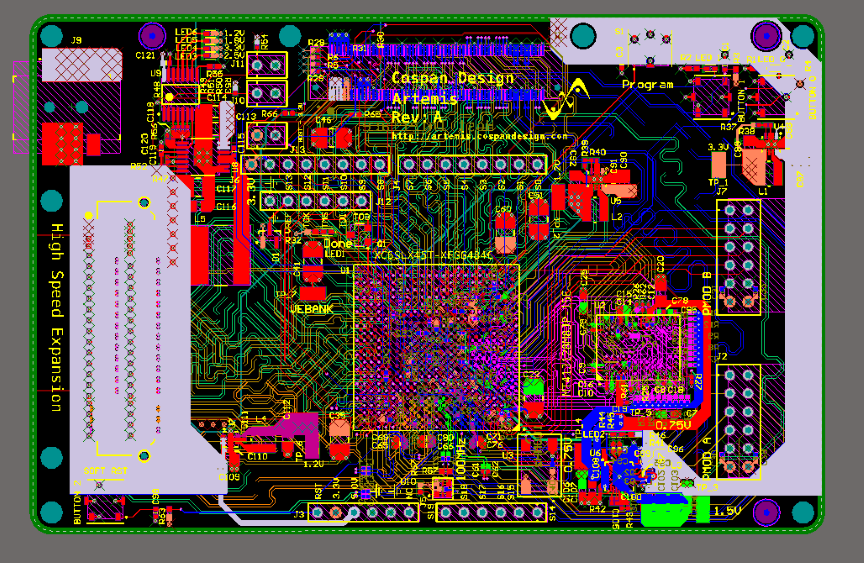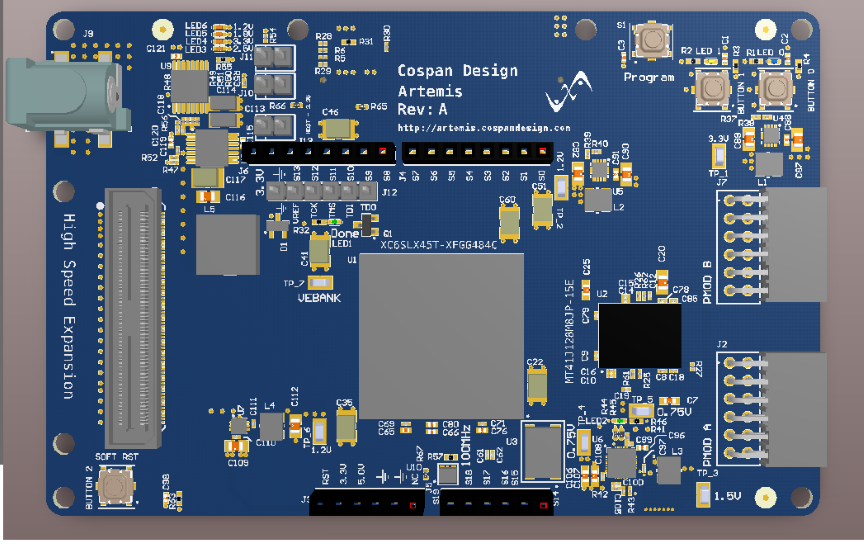I finally hit the limit of the little Dionysus and it came in form of the Nintendo Entertainment System.
Dionysus has 9K Luts. In the world of FPGAs that gets eaten pretty fast by the infrastructure of Nysa. Not to say you can't interface with LCDs, Cameras and Audio but when the design is more complicated like, say a NES, the MAP tool will barf
Slice Logic Utilization:
Number of Slice Registers: 6,491 out of 11,440 56%
Number used as Flip Flops: 6,474
Number used as Latches: 11
Number used as Latch-thrus: 0
Number used as AND/OR logics: 6
Number of Slice LUTs: 10,074 out of 5,720 176% (OVERMAPPED)
Number used as logic: 10,028 out of 5,720 175% (OVERMAPPED)
Number using O6 output only: 8,008
Number using O5 output only: 562
Number using O5 and O6: 1,458This has prompted me to move forward with Artemis. A devboard with a larger FPGA, DDR3 and a flexible interface for both communicating with the board and expanding its capabilities. Here is the current view of Artemis:


Along with all the connectors of Dionysus there is a high speed expansion that contains 50 Single ended, 25 Differential connectors as well as two SERDES Channel each capable of rates at about 3Gbps. I spent a long time debating whether to use this non-standard connector as opposed to the standard FMC connector but I have two reasons:
- The FMC Connector is $17.50 each!
- Hobbyist cannot make expansion boards without paying the prohibitively high prices for assembly. In order to get the FMC mating connector on an expansion board developers will need to pay for either assembly or some clever homebrew trick. With this you can possibly solder it by hand or use a heat gun to mount this. I hope this will help developers with less money to make some great projects.
I'm looking forward to implementing image pipelines and SDR based projects.
 Dave
Dave
Discussions
Become a Hackaday.io Member
Create an account to leave a comment. Already have an account? Log In.